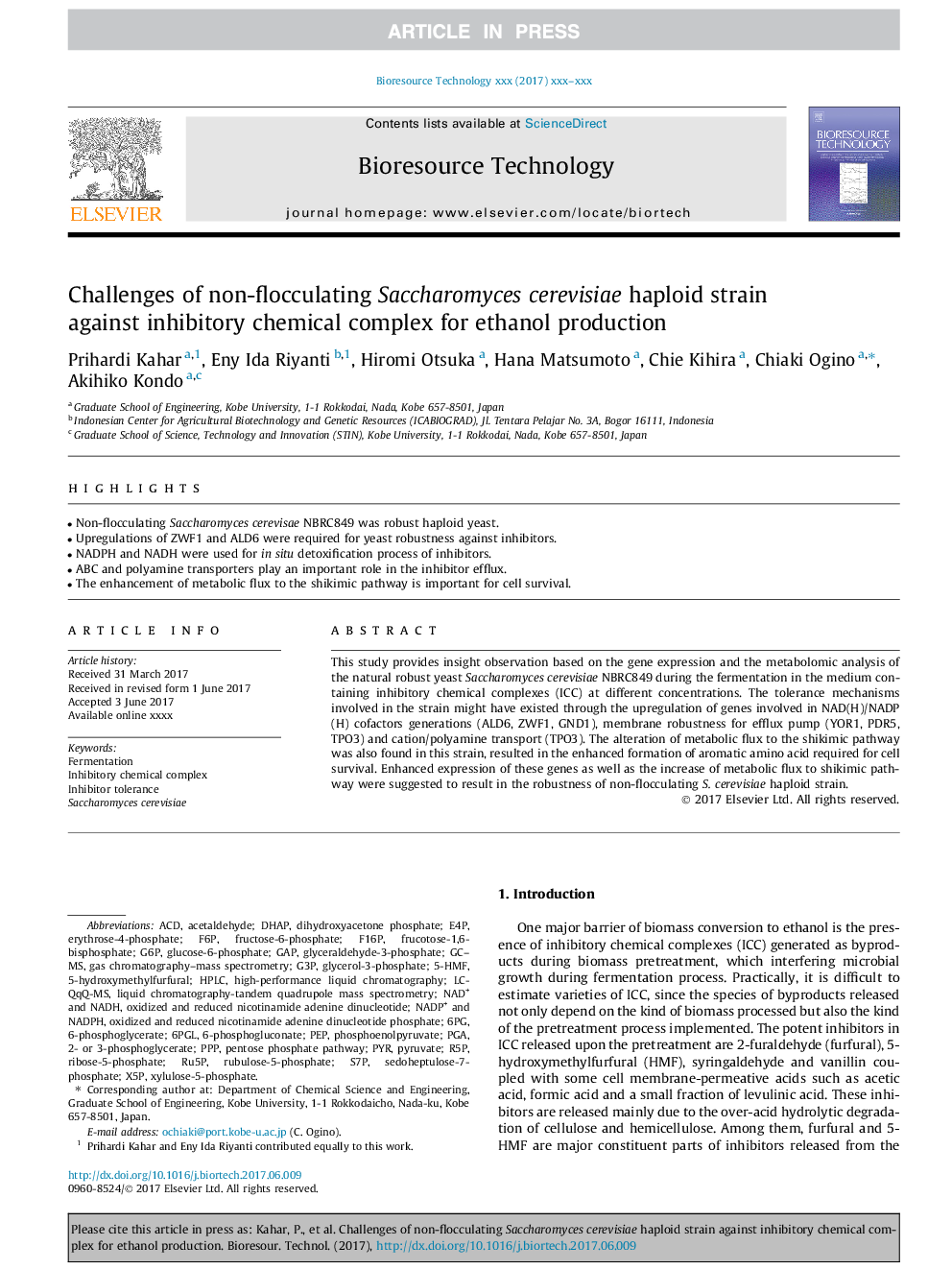| Article ID | Journal | Published Year | Pages | File Type |
|---|---|---|---|---|
| 7069412 | Bioresource Technology | 2017 | 11 Pages |
Abstract
This study provides insight observation based on the gene expression and the metabolomic analysis of the natural robust yeast Saccharomyces cerevisiae NBRC849 during the fermentation in the medium containing inhibitory chemical complexes (ICC) at different concentrations. The tolerance mechanisms involved in the strain might have existed through the upregulation of genes involved in NAD(H)/NADP(H) cofactors generations (ALD6, ZWF1, GND1), membrane robustness for efflux pump (YOR1, PDR5, TPO3) and cation/polyamine transport (TPO3). The alteration of metabolic flux to the shikimic pathway was also found in this strain, resulted in the enhanced formation of aromatic amino acid required for cell survival. Enhanced expression of these genes as well as the increase of metabolic flux to shikimic pathway were suggested to result in the robustness of non-flocculating S. cerevisiae haploid strain.
Keywords
PGA6PGLxylulose-5-phosphatesedoheptulose-7-phosphate6PGX5PRU5PE4PLC-QqQ-MSF6PS7PR5PPYRG6PACDPEP5-HMFPPPG3PDHAP5-Hydroxymethylfurfural6-phosphogluconateGC–MSerythrose-4-phosphateacetaldehydeInhibitor toleranceFermentationdihydroxyacetone phosphateribose-5-phosphateSaccharomyces cerevisiaeGAPgas chromatography–mass spectrometryfructose-6-phosphatephosphoenolpyruvatepentose phosphate pathwayPyruvatehigh-performance liquid chromatographyHPLCglucose-6-phosphateglyceraldehyde-3-phosphate glycerol-3-phosphate
Related Topics
Physical Sciences and Engineering
Chemical Engineering
Process Chemistry and Technology
Authors
Prihardi Kahar, Eny Ida Riyanti, Hiromi Otsuka, Hana Matsumoto, Chie Kihira, Chiaki Ogino, Akihiko Kondo,
